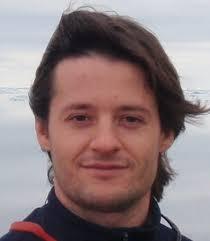event
The West Antarctic Ice Sheet Response to Tropical Forcing -- Rise of the Machines and Global Sea Level
Primary tabs
The School of Earth and Atmospheric Sciences presents Dr. Pierre Dutrieux, British Antarctic Survey
The West Antarctic Ice Sheet Response to Tropical Forcing -- Rise of the Machines and Global Sea Level
Glaciers terminating in the Amundsen Sea in West Antarctica have all accelerated over the past decades, leading to significant global sea level rise. Oceanic melting of the ice shelves, the main driver of ice loss, is highly variable at interanual to decadal timescales, yet the ice response is thought to be largely due to an ice dynamic instability tied to the glacier bed geometry, triggered by an initial multi-decadal ocean warming anomaly with potential anthropogenic origins, and leaving a relatively minor role to the ocean variability regarding the pace of ice retreat and acceleration.
During the first part of the presentation, I will present historical hydrographic observations to construct a robust climatology of ocean properties over the entire Amundsen Sea, allowing analysis of the ocean heat content distribution and its variability since 1994. Instead of a continuous warming, a spatially coherent decadal cycle prevails from the continental shelf break to the ice fronts.
Satellite observations of sea surface height and moored current meters demonstrate that barotropic variability of the Antarctic slope front undercurrent, largely connected to zonal wind anomalies arising from changes in atmospheric convection in the tropical Pacific, like El Niño, modulates deep heat flux from the Southern Ocean to the continental margin, and explains most of the ocean heat content variations.
In turn, ocean heat variability is associated with basin-wide melt variability of long enough duration to significantly impact ice velocity. The amplitude and the spatial coherency of the ice response despite a variety of geometrical constraints indicate a consistent and important role for the ocean in modulating ice dynamics, now and in the future.
The second part of the presentation will focus on new tools to explore ice shelf cavities over months to years, and recent observations made with those under the Dotson ice shelf in the Amundsen Sea, shedding light of ice/ocean interactions processes and offering tantalizing prospects.
Status
- Workflow status: Published
- Created by: nlawson3
- Created: 01/05/2021
- Modified By: nlawson3
- Modified: 03/01/2021
Categories
Keywords
Target Audience

